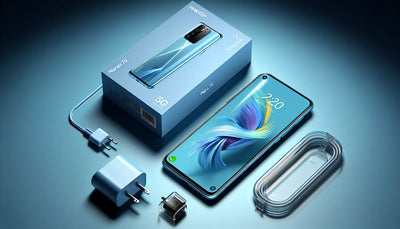Introduction
The Kirin 9010 is the most recent version from Huawei, and this processor is really making headways due to its fast speed and excellent efficiency. But how is it different from its predecessors or, for that matter, from other mobile processors? We get a sneak peek into the exciting world of mobile processors and present you with the cutting-edge technology in the form of the Kirin 9010 chipset.
Introducing the Kirin 9010
The Kirin 9010, which was just announced, will be the latest in the series. This new chipset does deliver an octa-core CPU, which is impressive, but more interestingly, it is that Huawei has managed to integrate this hyperthreading technology, therefore allowing applications to address it as if it had 12 cores.
The very first Geekbench scores, though, hint at better processing power than their predecessor, and this does seem a rather good development in the mobile processor field.
Comparing the Kirin 9010 to Its Predecessor
Its Kirin 9010 powerful 8-core CPU makes use of the hyperthreading technology, with applications showing as if one were having 12 cores. Not exactly new for Huawei, the Kirin 9010 shall bring a notice-worthy improvement in processing power against the previous generation Kirin 9000 supporting hyperthreading. All this will herald increased efficiency for single- and multi-core scenarios, harbinger of progress in the world of mobile processors.
Opticore Setup of the Kirin 9010
The Kirin 9010 places three mid-range Taon mid cores clocked at 2.18 GHz together with four energy-efficient Cortex-A510 cores clocked at 1.55 GHz, featuring an OptiCore setup.
This does not, however, compromise the performance of the processor at all but rather is attributed to this potent configuration. On the side of visuals and gaming, the Mali-G71 MP10 GPU, with assured frequency to run at 750 MHz, assures consumers of this device great graphics.
This hardware advancement aims at catering to performance at the next level—super-to and above any Kirin chipset and any other mobile processor.
Advancements Under the Hood
To begin with, the Kirin 9010 brings a good number of improvements under its hood, unparalleled against the preceding models and any other mobile processor. Some of the major changes are detailed below:
Hyperthreading Technology: The Kirin 9010 comes with hyperthreading technology, which brings about one physical core and two logical cores. In short, it allows a central processor to handle many tasks at a go, hence better performance and efficiency at large. Improved Processing Power: Early Geekbench scores are pointing towards improved processing power compared to the predecessor, Kirin 9000. This small increment, though, guarantees that one gets perfect performance, either when running a single-core application or multi-core. OptiCore Setup: One Hi-Fi Taon big core, three Taon mid cores, and four energy-efficient Cortex-A510 cores are the Kirin 9010. This makes sure the device stays optimally rounded for performance and thus is capable of a wider range of all kinds of tasks without having to compromise the performance of any single core. Mali-G71 MP10: To support the overall performance of the Kirin 9010, there comes an improved Mali-G71 MP10 GPU operating at a solid 750 MHz frequency, which is intended for smooth visuals and playing.
Conclusion
All told, the new Kirin 9010 from Huawei doesn't pack any substantial improvements in the CPU category, but all the changes applied under the phone's hood cumulatively add up to suggest that performance and efficiency will take a huge leap. Hyperthreading technology, it includes improved processing muscle, impressive Opticore setup, and a better GPU. Well, that's not it, as Kirin 9010 has brought a new definition of what a mobile processor should have. Over time, with the advance of technologies, Huawei has been able to keep its leadership at the innovation frontier in the world of mobile technology, delivering developments that are exciting and redefine the future phones and other devices. In the coming year, stay with us for updates on these and more as Huawei works to redefine the limits of possibility in the mobile processor space.
FAQs
1. What sets the Kirin 9010 apart from its predecessors and other mobile processors?
Kirin 9010, made using 3nm technology, should offer higher power efficiency and denser transistors compared to any of the predecessors or most of the mobile processors made today. In return, it is bound to assure users of higher performance and less power consumption. This will come with better AI capabilities, supported by a NPU third-generation Neural Processing Unit (NPU), hence providing better functioning in AI-related tasks.
2. How does hyperthreading technology contribute to the enhanced performance of the Kirin 9010?
One is a hyper-threading technology in Kirin 9010, which enables an increase in running process efficiency because two threads can run per core at a time. It allows the processor to do more tasks and increases the ability of the processor for multitasking.
Hyperthreading greatly improves speed, since it can deal with complex or double processes, which will result in a faster and responsive device.
3. What are the improvements in processing power in the Kirin 9010 compared to its predecessor, the Kirin 9000?
Overall, the new Kirin 9010 increases the CPU performance by about 20% and GPU by 30% compared to the previously released Kirin 9000. Fundamentally, the increase in performance is resultant from the new architecture and a reduced 3nm process technology. This further increases speed and efficiency in processing tasks.
4. What's the Opticore setup inside Kirin 9010 and how does it contribute to the performance?
OptiCore basically represents the custom design configuration of the Kirin 9010, which is one ultra-high-performance core coupled with three other high-performance cores and four more efficiency cores. This setup enabled dynamic changes between the cores based on the power they needed and enabled energy efficiency, therefore affording the best performance in both heavy and light tasks, and even offering better battery life with the same performance maintained.
5. What are the advancements under the hood of the Kirin 9010?
This is topped off by under-the-hood improvements, like a new AI processing unit, improvements to thermal management systems, and even faster compatibility with LPDDR5X RAM. It will equally be equipped with an improved 5G modem that supports a bigger set of frequencies and provides much faster data speeds. These three combined ensure a perfectly smooth and a very efficient user experience, especially the most demanding applications and network conditions.






















